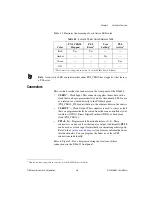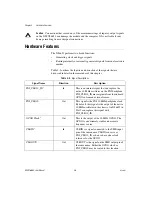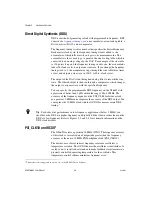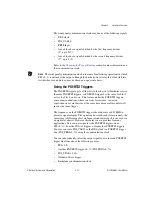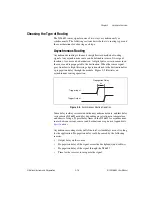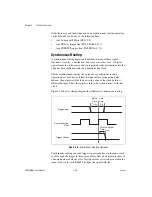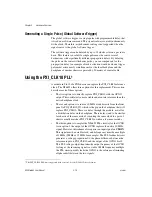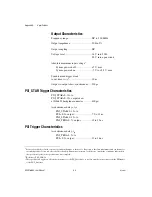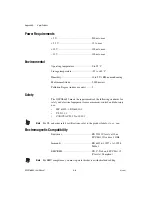
Chapter 3
Hardware Overview
©
National Instruments Corporation
3-15
Choosing the Type of Routing
The NI 6653 routes signals in one of two ways: asynchronously or
synchronously. The following sections describe the two routing types and
the considerations for choosing each type.
Asynchronous Routing
Asynchronous routing is the most straightforward method of routing
signals. Any asynchronous route can be defined in terms of two signal
locations: A source and a destination. A digital pulse or train comes in on
the source and is propagated to the destination. When the source signal
goes from low to high, this rising edge is transferred to the destination after
a propagation delay through the module. Figure 3-5 illustrates an
asynchronous routing operation.
Figure 3-5.
Asynchronous Routing Operation
Some delay is always associated with an asynchronous route, and this delay
varies among NI 6653 modules, depending on variations in temperature
and chassis voltage. Typical delay times in the NI 6653 for asynchronous
routes between various sources and destinations are given in Appendix A,
.
Asynchronous routing works well if the total system delays are not too long
for the application. Propagation delay could be caused by the following
reasons:
•
Output delay on the source
•
Propagation delay of the signal across the backplane(s) and cable(s)
•
Propagation delay of the signal through the NI 6653
•
Time for the receiver to recognize the signal
Trigger Input
Trigger Output
Propagation Delay
t
pd





